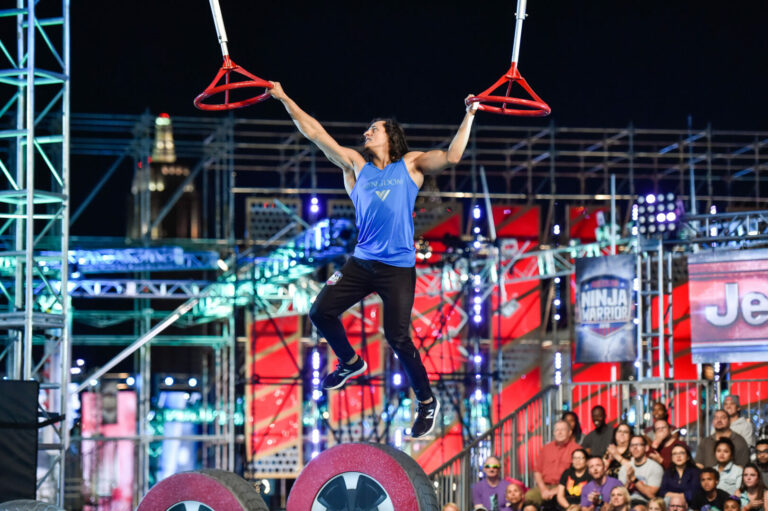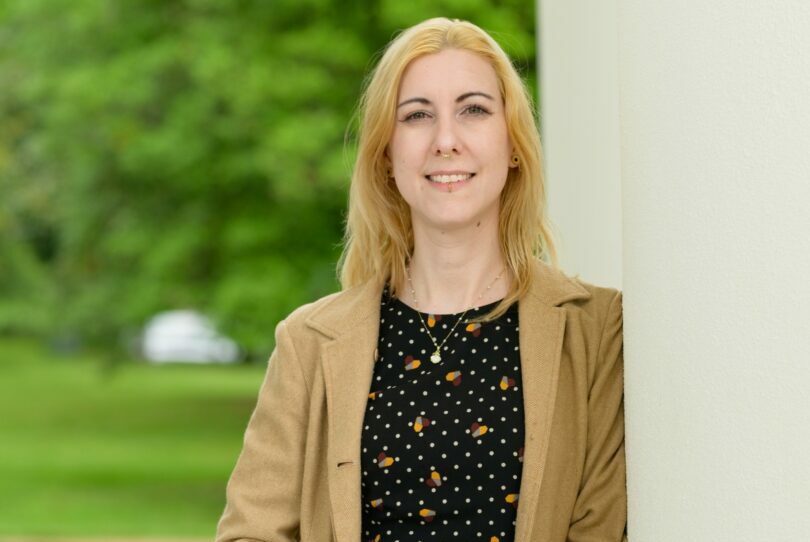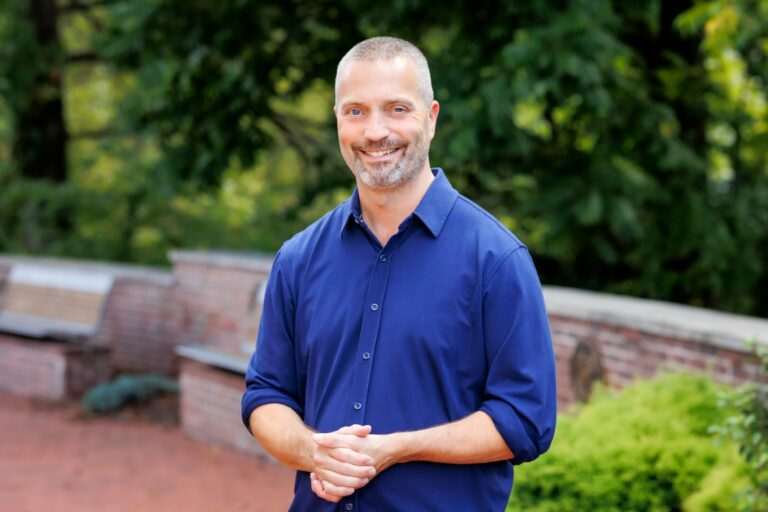We caught up with the brilliant and insightful Michael Greger, MD FACLM a few weeks ago and have shared our conversation below.
Michael, so good to have you with us today. We’ve always been impressed with folks who have a very clear sense of purpose and so maybe we can jump right in and talk about how you found your purpose?
I was only a kid when doctors sent my grandmother home in a wheelchair to die at age 65. Diagnosed with end-stage heart disease, she had already had so many bypass operations the surgeons essentially ran out of plumbing—the scarring from each open-heart surgery had made the next more difficult until they finally ran out of options. Confined to a wheelchair with crushing chest pain, her doctors told her there was nothing else they could do.
I think what sparks many kids to want to become doctors when they grow up is watching a beloved relative become ill or even die. For me, it was watching my grandma get better.
Soon after she was discharged, a segment aired on 60 Minutes about Nathan Pritikin. He had been gaining a reputation for reversing terminal heart disease and had just opened a new center—a live-in program where everyone was placed on a plant-based diet and then started on a graded exercise regimen. My grandmother somehow made the trek to become one of its first patients. They wheeled her in, and she walked out.
Later featured in Pritikin’s biography Pritikin: The Man Who Healed America’s Heart, she was described as one of the “death’s door people”:
“Frances Greger…arrived in Santa Barbara at one of Pritikin’s early sessions in a wheelchair. Mrs. Greger had heart disease, angina, and claudication; her condition was so bad she could no longer walk without great pain in her chest and legs. Within three weeks, though, she was not only out of her wheelchair but was walking ten miles a day.”
At that time, reversing heart disease didn’t even seem possible. Drugs were given to try to slow the progression, and surgery was performed to circumvent clogged arteries to try to relieve symptoms (literally bypassing the problem), but the disease was expected to worsen until you died. Today, we know that as soon as we stop eating an artery-clogging diet, our bodies may start healing themselves, in many cases opening up arteries without drugs or surgery.
By the time I became a doctor, giants like Dean Ornish, M.D., had already proven beyond a shadow of a doubt what Pritikin had shown to be true. Using the latest high-tech advances—cardiac PET scans, quantitative coronary arteriography, and radionuclide ventriculography—Dr. Ornish and his colleagues showed that heart disease, our leading killer, may be reversed with the lowest-tech approach—diet and lifestyle.
I do what I do for my grandma, and so no one else has to suffer with treatable, preventable, survivable diseases. That’s why I went to medical school, that’s why I went into lifestyle medicine, why I started NutritionFacts.org, why I wrote How Not to Die, and why all the proceeds from all of my books and speaking engagements are donated directly to charity. I just want to do for everyone’s family what Pritikin did for mine.

Appreciate the insights and wisdom. Before we dig deeper and ask you about the skills that matter and more, maybe you can tell our readers about yourself?
Dr. Ornish and his colleagues’ studies were published in some of the most prestigious medical journals in the world. Yet medical practice hardly changed. Why? Why were doctors still prescribing drugs and using Roto-Rooter-type procedures to just treat the symptoms of heart disease and try to forestall what they chose to believe was the inevitable—an early death?
This was my wake-up call. I opened my eyes to the depressing fact that there are other forces at work in medicine besides science. The U.S. health care system runs on a fee-for-service model in which doctors get paid for the pills and procedures they prescribe, rewarding quantity over quality. We may not get reimbursed for time spent counseling our patients about the benefits of healthy eating. If doctors were instead paid for performance, there would be a financial incentive to treat the lifestyle causes of disease. Until the model of reimbursement changes, I don’t expect great changes in medical care or medical education.
Only a quarter of U.S. medical schools appear to offer a single dedicated course on nutrition. During my first interview for medical school, at Cornell University, I remember the interviewer emphatically stating, “Nutrition is superfluous to human health.” And he was a pediatrician! I knew I was in for a long road ahead. Come to think of it, I think the only medical professional who ever asked me about a family member’s diet was our veterinarian.
In medical school at Tufts, even with our paltry twenty-one hours of nutrition training, there was no mention of using diet to treat chronic disease, let alone reverse it. I was only aware of this body of work because of my family’s personal story.
The question that haunted me during training was this: If the potential cure to our number-one killer could get lost down the rabbit hole, what else might be buried in the medical literature? I made it my life’s mission to find out.
Most of my years in Boston were spent scouring the dusty stacks in the basement of Harvard’s Countway Library of Medicine. I started practicing medicine, but no matter how many patients I saw in the clinic every day, even when I was able to change the lives of entire families at a time, I knew it was just a drop in the bucket, so I went on the road.
With the help of the American Medical Student Association, my goal was to speak at every medical school in the country every two years to influence an entire generation of new doctors. I didn’t want another doctor to graduate without this tool—the power of food—in their toolbox. If my grandma didn’t have to die from heart disease, perhaps no one’s grandparent did.
There were periods where I was giving forty talks a month. I’d roll into town to give a breakfast talk at a Rotary Club, deliver a presentation at the medical school over lunch, then speak to a community group in the evening. I was living out of my car, one key on my keychain. I ended up giving more than a thousand presentations around the world.
Not surprisingly, life on the road was not sustainable. I lost a marriage over it. With more speaking requests than I could accept, I started putting all my annual research findings into a DVD series, Latest in Clinical Nutrition. Every penny I received from selling those DVDs went directly to charity, as does the money I get from my speaking engagements and book sales to this day, including the book you’re reading now.
As corrupting an influence as money is in medicine, it appears to me to be even worse in the field of nutrition, where it seems everyone has their own brand of snake-oil supplement or wonder gadget. Dogmas are entrenched and data too often cherry-picked to support preconceived notions.
True, I have biases of my own to rein in. Although my original motivation was health, over the years, I’ve grown into quite the animal lover. Three dogs run our household, and I spent much of my early professional life proudly serving The Humane Society of the United States as the charity’s public health director. So, like many people, I care about the welfare of the animals we eat, but first and foremost, I am a physician. My primary duty has always been to care for my patients, to accurately provide the best available balance of evidence.
In the clinic, I could reach hundreds; on the road, thousands. But this life-or-death information needed to reach millions. Enter Jesse Rasch, a Canadian philanthropist who shared my vision of making evidence-based nutrition freely accessible and available to all. The foundation he and his wife, Julie, set up put all my work online. NutritionFacts.org was born. Today, I can reach more people while working from home in my jammies than I ever could when I was traveling the world.
Now a self-sustaining nonprofit organization itself, NutritionFacts.org has thousands of bite-sized videos on nearly every conceivable nutrition topic, and I post new videos and articles every week. Everything on the website is free for all, for all time. There are no ads, no corporate sponsorships. It’s just a labor of love, a tribute to my grandmother.
When I started this work more than two decades ago, I thought the answer was to train the trainers, educate the profession. But with the democratization of information, doctors no longer hold a monopoly as gatekeepers of knowledge about health. When it comes to safe, simple lifestyle prescriptions, I’m realizing it may be more effective to empower individuals directly. In a national survey of doctor office visits, only about one in five smokers were told to quit. Just as you don’t have to wait for your physician to tell you to stop smoking, you don’t have to wait to start eating healthier. Together, we can show my medical colleagues the true power of healthy living.
Last year alone, there were more than a quarter million papers published in the medical literature on nutrition, nearly a thousand articles a day. Thankfully, I now have a whole team of researchers, a wonderful staff, and an army of volunteers who help me dig through the mountains of new information. This book is not just another platform through which I can present my findings but a long-awaited opportunity to share practical advice about how to put this life-changing, life-saving science into practice in our daily lives.
I think my grandma would be proud.

If you had to pick three qualities that are most important to develop, which three would you say matter most?
Commitment: Do what you love, and you’ll never work a day in your life. An adage, I know, but I believe it to be true. My passion for sharing the best in evidence-based nutrition science is what keeps me going—and going with an eagerness and excitement that hasn’t faded in decades.
Resilience: As obesity rates continue to climb, new zoonotic diseases emerge, pay-to-play pseudo-scientific journals publish misleading studies, industries’ deep pockets get even deeper and their lobbying efforts even more far-reaching, and on and on, it can feel daunting. But, instead of throwing up my hands, I make a cup of green tea and get back to my treadmill desk.
Optimism: Interest in whole food, plant-based eating has exploded around the world, with more individuals embracing diet and lifestyle changes—whether to improve their health, that of the planet, or the animals themselves—and I am heartened by these steps we as a society are taking to help live our lives healthfully and vibrantly.

Before we go, maybe you can tell us a bit about your parents and what you feel was the most impactful thing they did for you?
From my earliest memories, my parents and my grandmothers encouraged me to learn. I read voraciously and questioned everything from a young age. They also instilled social responsibility in me. I have a picture on the wall of my mother getting dragged away and arrested during the civil rights movement. It wasn’t enough to want to live in a better world. How could I help make that possible?
Contact Info:
- Website: https://nutritionfacts.org/
- Instagram: https://instagram.com/nutrition_facts_org/
- Facebook: https://www.facebook.com/NutritionFacts.org
- Linkedin: https://www.linkedin.com/company/nutritionfacts.org
- Twitter: https://x.com/nutrition_facts
- Youtube: https://www.youtube.com/user/NutritionFactsOrg

Image Credits
They are all owned by NutritionFacts. No credits necessary.
so if you or someone you know deserves recognition please let us know here.




